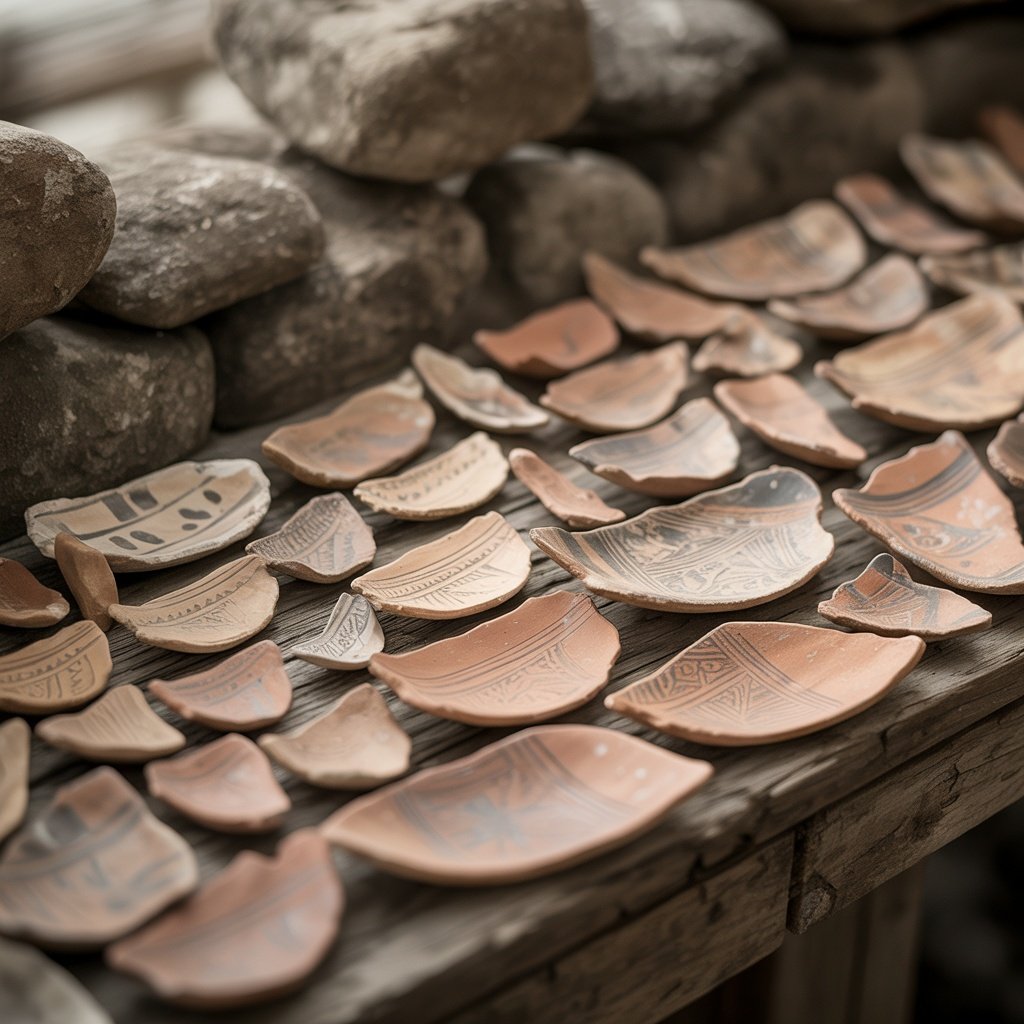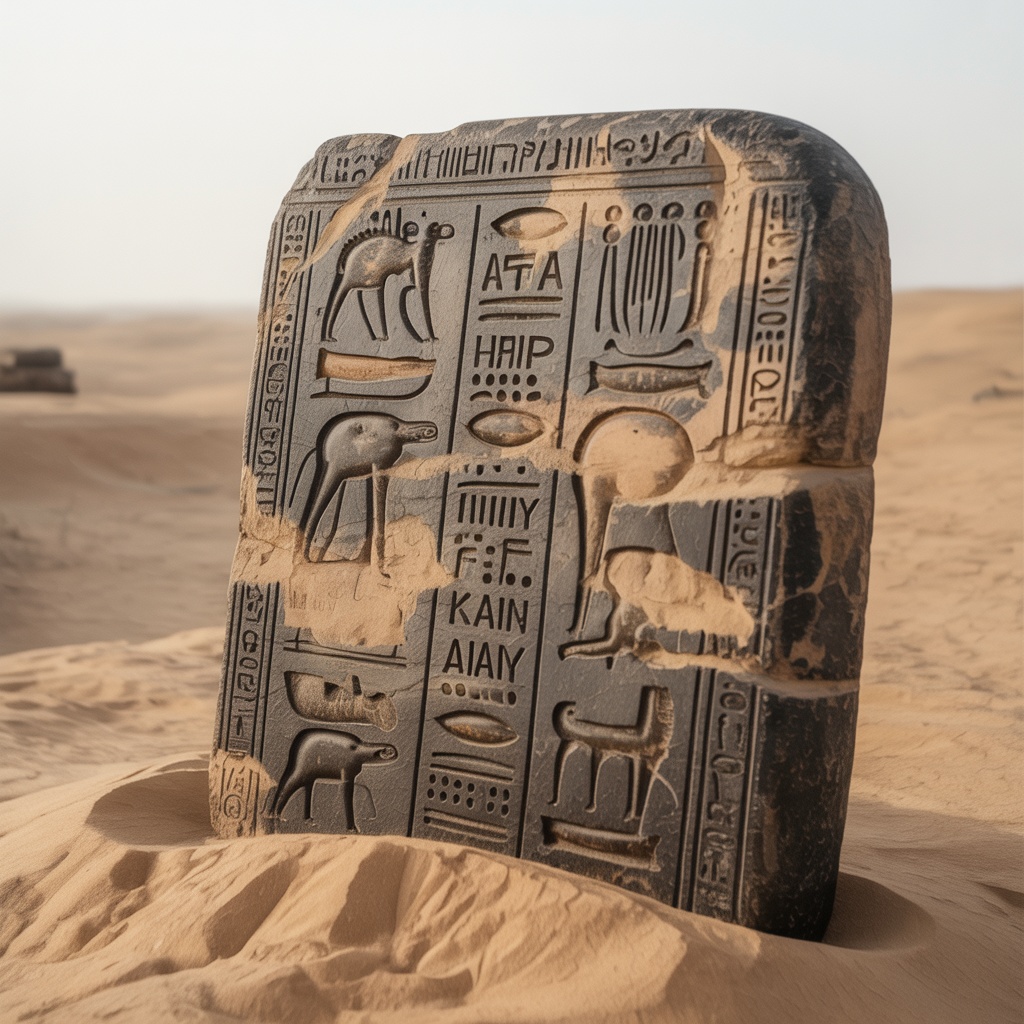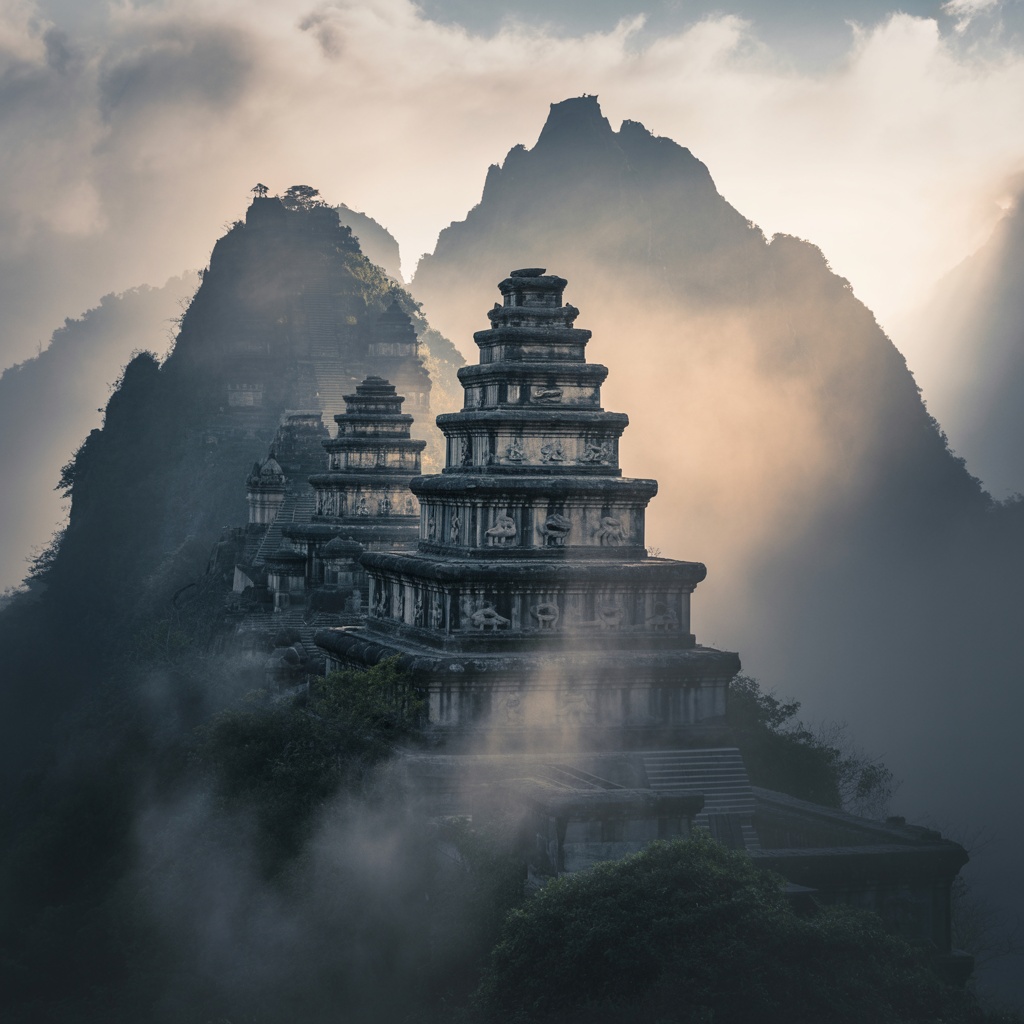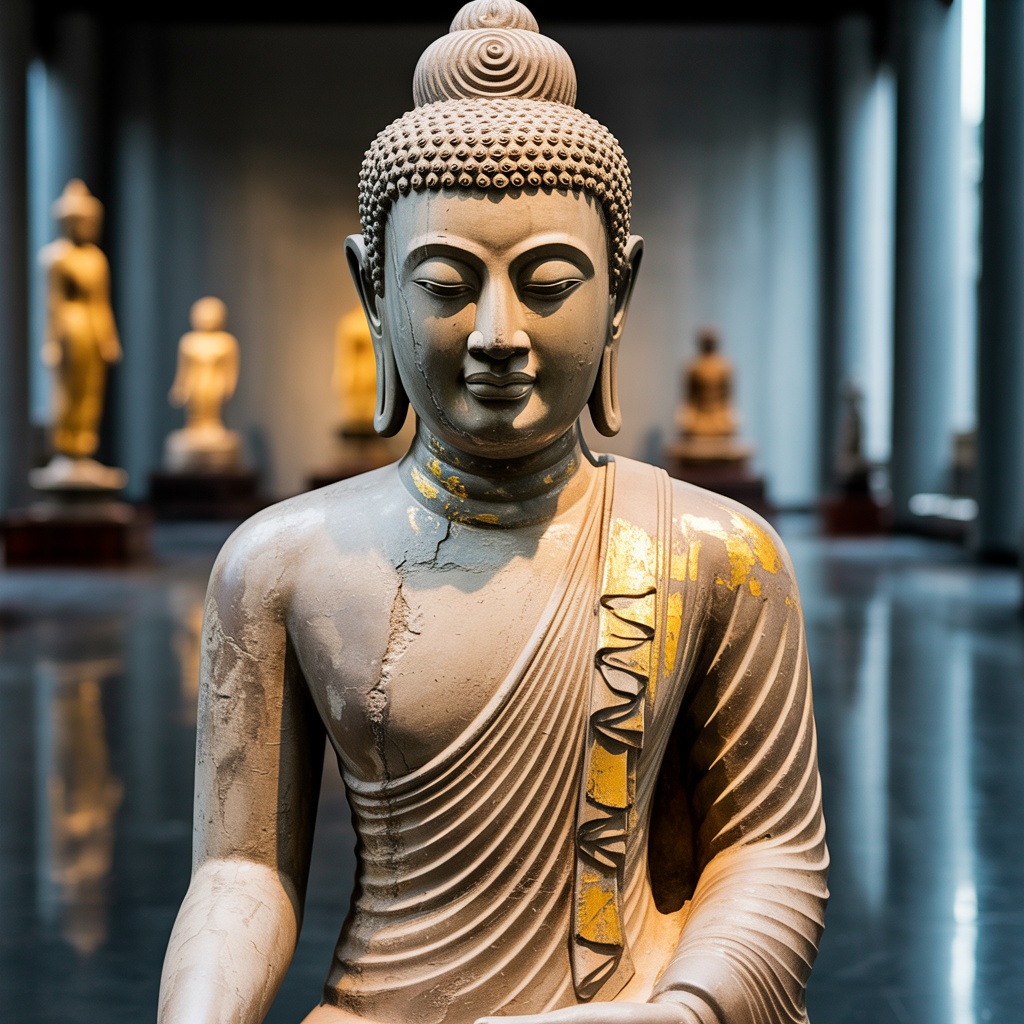The Asian Civilisations Museum (ACM) stands as Singapore's premier institution dedicated to exploring the artistic, cultural, and archaeological heritage of Asia, with exceptional collections spanning from ancient civilisations through contemporary periods. Housed in the magnificent Empress Place Building—a neoclassical structure dating to 1865—the museum presents over 1,300 artefacts across 11 thematic galleries, offering visitors comprehensive insights into Asian cultural achievements from the Mediterranean to the Pacific, with particular depth in Southeast Asian, Chinese, South Asian, and Islamic collections.
As archaeological tourism specialists who recognise museums as essential complements to site-based exploration, we consider the Asian Civilisations Museum exceptional for its scholarly collections, innovative presentation methods, and role in contextualising Singapore's position within broader Asian cultural networks. This comprehensive guide explores the museum's history, collection highlights, gallery themes, educational programmes, and practical visiting information for cultural heritage enthusiasts seeking deeper understanding of Asian archaeological and artistic heritage.
Museum History and Institutional Development
The Asian Civilisations Museum's development reflects Singapore's evolving understanding of its cultural identity and role in preserving and interpreting Asian heritage for both local and international audiences.
Founding Vision and Early Development
The museum originated in 1993 when the National Museum of Singapore's ethnographic collections were reorganised into a dedicated institution focusing on Asian civilisations. This reorganisation recognised that Singapore's multicultural population and strategic location in maritime Southeast Asia provided unique opportunities for presenting pan-Asian cultural heritage to diverse audiences.
Initially housed in the Armenian Street building (now the Peranakan Museum), the institution moved to its current location at Empress Place in 2003. This move provided substantially expanded exhibition space, enabling comprehensive permanent galleries rather than rotating displays of limited portions of collections.
The Empress Place Building
The Empress Place Building itself constitutes an important historical monument, originally constructed in 1865 as government offices during British colonial administration. The neoclassical structure, with its distinctive columned facades and courtyards, exemplifies colonial architecture adapted to tropical conditions. Major renovations between 1994 and 2003 preserved the building's historical character whilst installing modern museum infrastructure including climate control, lighting systems, and accessibility features essential for proper artefact preservation and visitor experience.
The building's location along the Singapore River in the Colonial District places it at the historical centre of Singapore's development as a trading port. The riverside setting provides atmospheric context for the museum's emphasis on maritime trade as a crucial factor in cultural exchange across Asia.
Collection Highlights and Gallery Themes

The Asian Civilisations Museum organises its permanent collections into thematic galleries examining different aspects of Asian cultural heritage, regional traditions, and cross-cultural exchanges. This thematic approach helps visitors understand broader patterns whilst appreciating specific artistic and archaeological achievements.
Southeast Asia Gallery
The Southeast Asia gallery explores the region's diverse cultures, archaeological heritage, and historical development from prehistoric periods through the colonial era. This gallery holds particular significance for understanding Singapore's regional context and cultural connections.
Prehistoric Artefacts: The collection includes stone tools, pottery, and bronze implements from various Southeast Asian sites dating to the Neolithic and Bronze Age periods (approximately 3000 BCE-500 BCE). These artefacts demonstrate early human settlement patterns, technological development, and the spread of agricultural societies across the region.
Hindu-Buddhist Period Materials: Exceptional stone sculptures, bronze figures, and architectural fragments from Hindu and Buddhist temples across Southeast Asia (approximately 5th-15th centuries CE) illustrate the profound influence of Indian religions and artistic traditions. Notable pieces include Cambodian Khmer sculptures reminiscent of Angkor Wat architectural styles, Javanese Hindu deities from Indonesian temple complexes, and Thai Buddhist images showing distinctive regional interpretations.
Maritime Trade Materials: The museum's Southeast Asian collections emphasise maritime trade as a crucial factor in regional development. Exhibits include recovered shipwreck cargoes (ceramics, metalwork, glass beads), navigational instruments, and trade goods documenting the exchange networks connecting Southeast Asia to China, India, the Middle East, and eventually Europe.
China Gallery
The China gallery presents one of Southeast Asia's finest collections of Chinese art and archaeology outside of China itself, spanning from Neolithic periods through the Qing dynasty (approximately 5000 BCE-1911 CE).
Ancient Bronzes: Ritual bronze vessels from the Shang and Zhou dynasties (approximately 1600-256 BCE) demonstrate the sophisticated metallurgical skills and ritual practices of early Chinese civilisations. These vessels, used in ancestor worship ceremonies, display intricate decorative motifs and inscriptions providing valuable historical information.
Ceramic Collections: The museum holds extensive Chinese ceramic collections representing major kiln sites and periods including Tang dynasty sancai (three-colour) wares, Song dynasty celadons and white porcelains, Yuan dynasty blue-and-white porcelains, and Ming and Qing imperial and export wares. These ceramics document both Chinese artistic evolution and the massive export trade that distributed Chinese porcelains throughout Asia and beyond.
Buddhist Art: Stone and bronze Buddhist sculptures from various Chinese periods illustrate Buddhism's arrival from India via Central Asia and its transformation within Chinese cultural contexts. The collection includes rare examples of early Chinese Buddhist art showing strong Central Asian influences alongside later works demonstrating distinctively Chinese aesthetic expressions.
South Asia Gallery
The South Asia gallery explores the rich cultural heritage of the Indian subcontinent, with collections emphasising religious art, trade connections, and India's profound cultural influence across maritime Asia.
Hindu Sculptures: Stone sculptures of Hindu deities from various Indian regions and periods demonstrate the iconographic traditions, regional stylistic variations, and theological concepts materialised in religious art. Major deities represented include Shiva, Vishnu, Ganesha, and various goddess forms, with examples illustrating how sculptors adapted canonical iconographic prescriptions to regional aesthetic preferences.
Buddhist Materials: The collection includes Buddhist sculptures, ritual objects, and manuscript materials documenting Buddhism's development in its Indian homeland before spreading throughout Asia. Gandhara-style sculptures showing Greco-Roman artistic influences demonstrate cultural exchange along ancient trade routes.
Textiles and Trade Goods: Indian textiles, particularly painted and printed cotton cloths traded throughout maritime Asia, demonstrate India's historical importance in regional commerce. These textiles influenced artistic traditions across Southeast Asia and formed important trade commodities exchanging for Southeast Asian spices, aromatic woods, and other products.
Islamic Art Gallery (West Asia)
The Islamic art gallery, subtitled "Material World of Islam," explores Islamic cultural achievements across regions from Turkey through Persia to Southeast Asia, emphasising artistic excellence and cultural sophistication.
Ceramics and Metalwork: The collection includes exceptional Islamic ceramics featuring distinctive blue-and-white patterns, lustre-ware techniques, and calligraphic decoration. Metalwork examples demonstrate sophisticated craftsmanship in brass, bronze, and precious metals, with vessels, weapons, and decorative objects showing geometric and vegetal motifs characteristic of Islamic art.
Textiles and Manuscripts: Islamic textiles including carpets, prayer rugs, and garments demonstrate regional weaving traditions and decorative principles. Illuminated Quranic manuscripts showcase Islamic calligraphy as an art form combining religious function with aesthetic excellence.
Southeast Asian Islamic Materials: The gallery particularly emphasises Islamic culture in maritime Southeast Asia, including the Malay world, documenting how Islam spread through trade networks and adapted to local contexts. These materials connect to Singapore's Islamic heritage preserved in living form in the Arab Quarter and surrounding areas.
Faith and Belief Gallery
This thematic gallery explores religious traditions across Asia including Hinduism, Buddhism, Islam, Christianity, and traditional belief systems, examining how religions spread through trade and migration whilst adapting to local contexts.
Materials include religious sculptures, ritual objects, manuscripts, and architectural fragments demonstrating both pan-Asian religious traditions and regional variations. The comparative approach helps visitors understand how different Asian societies responded to universal religious concepts through distinctive cultural expressions.
Trade and Exchange: Maritime Archaeology Collections

One of the Asian Civilisations Museum's distinctive strengths is its emphasis on maritime trade and cultural exchange, reflecting Singapore's historical role as a trading entrepôt and the importance of maritime networks in connecting Asian civilisations.
Shipwreck Archaeology
The museum displays materials from several historically significant shipwrecks recovered from Southeast Asian waters, providing tangible evidence of ancient and medieval maritime trade networks.
Tang Shipwreck (9th Century CE): Discovered off Indonesia's Belitung Island in 1998, this shipwreck yielded over 60,000 artefacts including Chinese ceramics, gold and silver vessels, and other trade goods. This cargo represents one of the most significant discoveries documenting Tang dynasty maritime trade with the Middle East. The museum displays a selection of recovered materials alongside interpretive information about the ship's journey, cargo, and tragic fate.
Other Shipwreck Materials: Additional shipwreck cargoes from various periods document the continuous maritime trade connecting China, Southeast Asia, India, and the Middle East over many centuries. These underwater archaeological discoveries provide unique insights unavailable from land-based excavations, preserving time-capsule snapshots of specific trading voyages.
Trade Goods and Exchange Networks
Beyond shipwreck materials, the museum displays trade goods recovered from various archaeological contexts: Chinese ceramics found throughout Southeast Asia, Indian textiles preserved in Indonesian contexts, Middle Eastern glass beads discovered in Southeast Asian burials, and Southeast Asian aromatic woods, spices, and forest products that moved along exchange networks to distant markets.
These materials demonstrate that extensive trade networks connected diverse Asian societies long before European maritime expansion. The movement of goods facilitated cultural exchange, religious transmission, and technological diffusion, fundamentally shaping the development of Asian civilisations.
Special Exhibitions and Programmes
Beyond permanent galleries, the Asian Civilisations Museum hosts special exhibitions, educational programmes, and cultural events that expand upon collection themes and present new research.
Temporary Exhibitions
The museum regularly organises temporary exhibitions featuring materials from its collection reserves, loans from other institutions, or thematic presentations exploring specific aspects of Asian culture in depth. Past exhibitions have examined topics including Chinese imperial art, Southeast Asian textiles, Islamic manuscript traditions, and contemporary Asian artists responding to historical traditions.
These temporary exhibitions provide reasons for repeat visits and opportunities to see materials not permanently displayed. Exhibition schedules are published on the museum's website, allowing visitors to plan around topics of particular interest.
Educational Programmes
The museum offers extensive educational programming including guided tours, lectures, workshops, and family activities. Gallery tours led by museum educators or volunteer docents provide deeper insights into collections than independent viewing. Thematic tours focus on specific topics (religious art, ceramics, maritime trade, etc.) for visitors with particular interests.
Lecture programmes bring scholars, curators, and researchers to share current findings and research perspectives. These programmes keep the museum connected to academic discourse whilst making specialist knowledge accessible to public audiences.
Conservation and Research Facilities
The museum maintains professional conservation laboratories where specialists work to preserve and restore artefacts. Whilst conservation areas are not generally accessible to visitors, occasional special programmes offer behind-the-scenes glimpses of conservation work, demonstrating the scientific and technical expertise required to preserve cultural heritage for future generations.
The museum also supports scholarly research, with collections available for study by qualified researchers. Publications including exhibition catalogues and scholarly monographs disseminate research findings to academic and public audiences.
Museum Architecture and Visitor Experience

The physical museum experience—architectural setting, gallery design, and visitor amenities—significantly affects how visitors engage with collections. The Asian Civilisations Museum excels in creating accessible, informative, and aesthetically pleasing environments for cultural heritage appreciation.
Gallery Design and Interpretation
Gallery spaces balance aesthetic presentation with educational content. Artefacts are displayed with appropriate lighting, security, and climate control whilst remaining visually accessible. Interpretive labels provide essential information—object identification, dating, cultural context, and significance—in clear language suitable for non-specialist visitors whilst including details engaging to more knowledgeable audiences.
Interactive elements including multimedia displays, touchscreen information stations, and audio guides enhance understanding for visitors preferring different learning approaches. These technological additions complement rather than overshadowing the primary experience of engaging directly with authentic historical artefacts.
Accessibility Features
The museum provides wheelchair accessibility, lifts connecting all floors, accessible restrooms, and tactile exhibits for visually impaired visitors. Audio guides and gallery tours in multiple languages (English, Mandarin, Japanese, and others) accommodate international visitors. Family-friendly features including activity guides for children encourage intergenerational cultural heritage education.
Museum Amenities
Visitor amenities include cloakrooms for storing bags and personal items, a museum shop offering books, reproductions, and Asian crafts, and a riverside café providing refreshments with views of the Singapore River. These amenities support comfortable extended visits, encouraging visitors to spend several hours exploring collections thoroughly rather than rushing through.
Visiting the Asian Civilisations Museum: Practical Information
Location and Access
The museum is located at 1 Empress Place in Singapore's Colonial District, along the Singapore River. Raffles Place MRT station (East-West and North-South Lines) is approximately 5 minutes' walk away. Several bus routes stop near the museum. Limited metered parking is available nearby, though public transport is recommended due to central Singapore's traffic congestion.
Opening Hours and Admission
The museum opens daily (including public holidays) from 10:00 AM to 7:00 PM, with extended hours until 9:00 PM on Fridays. Admission fees are SGD 12 for adults, with discounts for seniors, students, and children. Singapore residents and certain membership holders receive free or discounted entry. Special exhibition fees may apply for temporary exhibitions.
Recommended Visit Duration
Allow 2-3 hours for comprehensive exploration of permanent galleries. Visitors with particular interests (Chinese ceramics, Southeast Asian sculpture, Islamic art, etc.) may wish to allocate additional time for focused study. Including temporary exhibitions and attending educational programmes requires longer visits—4-5 hours provides thorough engagement without rushing.
Photography Policies
Photography is permitted in most permanent gallery areas for personal, non-commercial use, though flash photography and tripods are prohibited to protect artefacts and avoid disturbing other visitors. Temporary exhibitions may have different photography policies depending on loan agreements with other institutions. Always observe posted signs and staff instructions regarding photography.
Guided Tours and Educational Services
Free guided tours conducted by museum volunteers operate daily at scheduled times (check museum website for current schedules). These tours provide excellent introductions to collections for first-time visitors. Our cultural heritage tourism services can arrange private specialist-led tours focusing on particular collection areas or themes aligned with your specific interests, providing deeper engagement than general public tours.
Connecting Museum Visits to Site-Based Exploration
Museums like the Asian Civilisations Museum function most powerfully when integrated with site-based cultural heritage exploration. Understanding artefacts' original contexts enhances appreciation, whilst museum knowledge enriches site visits by providing comparative perspectives and scholarly interpretation.
Pre-Visit Museum Research
For travellers planning expeditions to Asian archaeological sites, pre-trip museum visits provide valuable preparation. Seeing Khmer sculptures at the museum before visiting Angkor Wat, examining Chinese ceramics before exploring kiln sites, or studying Islamic art before visiting the Arab Quarter establishes foundational knowledge enhancing subsequent site experiences.
Post-Visit Contextualisation
Conversely, visiting museums after exploring archaeological sites provides opportunities for contextualisation and comparative study. Seeing similar materials from different regions helps understand shared traditions and regional variations. Museum labels and interpretive materials answer questions arising during site visits and point towards broader patterns requiring multiple site comparisons to fully appreciate.
Comprehensive Heritage Tourism
Our archaeological and cultural heritage expedition services intentionally integrate museum visits with site exploration. By combining these complementary experiences, we help visitors develop comprehensive understanding of Asian cultural heritage that neither museums nor sites alone can provide. This integrated approach transforms tourism from superficial sightseeing into genuine educational engagement with humanity's archaeological and cultural legacy.
